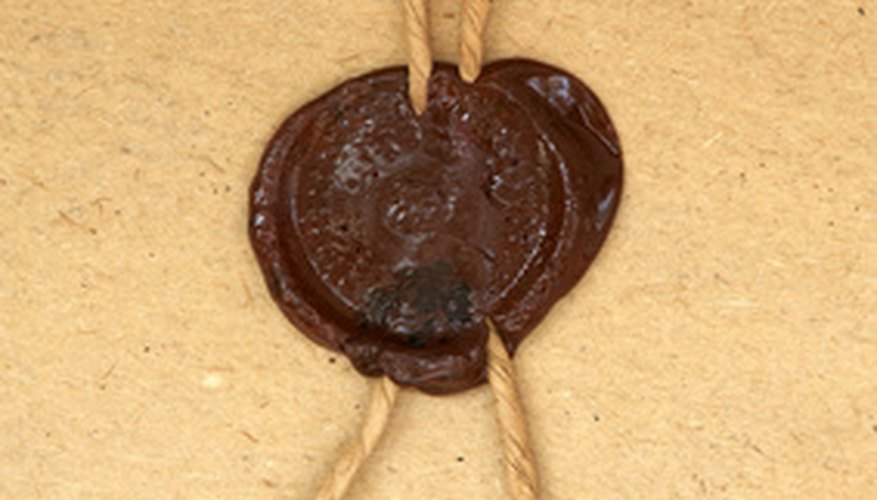The term "wax seal" has two meanings. The first refers to a wax image that is used to authenticate documents. The second is the stamp that produces the wax image. Each document seal bears an image that is unique to a particular individual, or entity. Seals may be single or double-sided, the double-sided examples being attached to the document by means of a cord or ribbon. Seals are also used to insure that a letter or document has not been opened. Though no longer legally required in most jurisdictions, old wax seals are highly collectable.
- The term "wax seal" has two meanings.
- The first refers to a wax image that is used to authenticate documents.
Examine the material from which the old wax seal is made. The wax seal, or stamp, is called the "matrix." It forms the "impression" that is the actual imprint on the wax. Old seal makers are made of natural materials, such as lead, bronze, gold, bone or ivory.
Measure the diameter of the wax seal matrix. Older wax seals, such as those that date from the early Middle Ages, are often less than one inch across. Later examples, like those used by royalty and nobility in the 18th and 19th centuries, can measure as many as 10 inches in diameter. In later periods, the size of the wax seal correlated directly with the importance of the individual to whom it belonged.
- Examine the material from which the old wax seal is made.
- Older wax seals, such as those that date from the early Middle Ages, are often less than one inch across.
Look at the material that comprises the document seal or impression. Medieval wax seals are made of pure beeswax. Beeswax is a natural product of bees. The wax was heated and dripped onto the document. The seal was then impressed into the wax while it was still hot. Many 19th century wax seals are actually made almost entirely of shellac, the image being impressed into the wet material.
- Look at the material that comprises the document seal or impression.
- Many 19th century wax seals are actually made almost entirely of shellac, the image being impressed into the wet material.
Note the colour of the old wax seal. Prior to the 11th century, antique wax seals were uncolored. They possessed the natural, yellowish tinge of pure beeswax. Antique wax seals of later times were often dyed red, yellow, green or even black.
Examine the cord or ribbon that attaches the old wax seal to the document. Double-sided seals are always attached in this manner, as are many single-sided seals. Authentic old wax seals should hang from cords made of natural fibre, or from strips of parchment. Parchment is the prepared skin of a cow. On important documents, such as those signed and sealed by royalty, the antique seal may be encased in a small cloth or leather pouch, or a wooden case. The pouch or case further protects the old wax seal.
TIP
Signet rings were also used to make old wax seals. Signet rings feature an image that is impressed into the wax. Antique signet rings were made of metal, as well as carved stones such as agate.
WARNING
Beware of old wax seals that are attached to documents with cords, or parchment strips that have been stitched or pasted back together. These cords or strips have been cut, and the original seal may have been replaced. These antique-looking wax seals may be forgeries.
